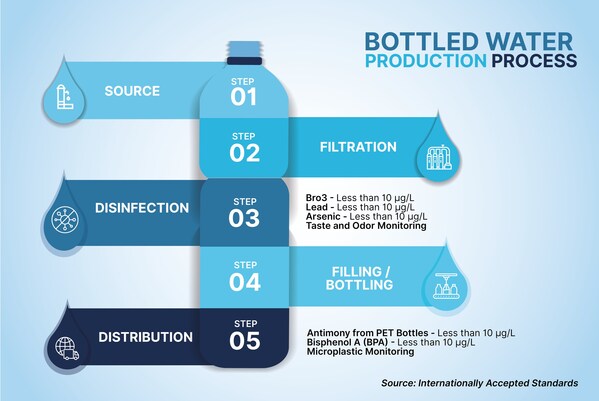JAKARTA,Indonesia,Sept. 3,2024 -- NGO Sirkadian,focusing on public health and environmental advocacy,recently discussed with Prof. Yuni K. Krisnandi,M.Sc.,Ph.D.,an inorganic chemistry expert and a member of the Royal Society of Chemistry,the growing concerns over the health risks of bottled water consumption. Prof. Yuni highlighted hidden dangers in bottled water that could have long-term public health impacts,stressing the urgent need for stricter government supervision and increased public awareness.

Understanding the bottled water production process: From source to distribution,each step ensures your water meets the highest safety and quality standards.
Clean drinking water is essential for health,supporting digestion,circulation,temperature regulation,and waste removal. With rising concerns over water safety,global bottled water consumption is projected to surge from 232 billion liters in 2011 to 513 billion liters by 2025.
However,the bottled water industry presents hidden risks. Water sourced from springs,wells,or municipal supplies undergoes purification through reverse osmosis,UV treatment,and ozonation. Despite these processes,significant health concerns persist.
Bisphenol A (BPA),found in plastic packaging,is linked to hormonal disruptions,reproductive issues,and heart disease. The World Health Organization (WHO) advises caution with BPA,recommending BPA-free options but not enforcing strict limits in bottled water. Additionally,microplastics—tiny fragments less than 5 millimeters in size—pose another concern. These particles,which do not biodegrade,can lead to cardiovascular issues,inflammation,and cellular damage.
A more pressing issue is bromate,a carcinogen that forms during ozonation—a common water sterilization process. Unlike BPA,bromate contaminates the water itself and poses significant health risks,including kidney damage. The WHO advises keeping bromate levels below 0.01 mg/L,yet this regulation is not enforced in many countries. Recent recalls,like the 2023 U.S. FDA action on Zephyrhills bottles and Saudi Arabia's 2019 warning on Amana water,highlight the seriousness of bromate contamination.
Although the Philippines has a regulatory framework for bottled water,enforcement challenges persist. The Food and Drug Administration (FDA) and the Department of Health (DOH) strive to align with WHO standards,yet risks like bromate continue to pose significant health threats.
Bottled water's clarity can be deceptive. Bromate forms when naturally occurring bromide in water reacts with ozone during disinfection. While this process eliminates pathogens,it also creates bromate,a potential carcinogen. The WHO recommends limiting bromate to 10 micrograms per liter,but it remains a hidden threat in supposedly safe bottled water.
"If bromate is found in bottled drinking water,it's usually due to one of two reasons: naturally occurring bromide or Br- anions in the water,which react with ozone (O3) during ozonization or sterilization," explained Prof. Yuni K. Krisnandi.
These concerns underscore the urgent need for stricter monitoring and regulatory measures to ensure bottled water safety. As global consumption rises,health risks demand vigilance from both consumers and corporations. Regulatory bodies must enforce tighter quality control to prevent contamination and protect public health. Ensuring safe drinking water is crucial for the well-being of current and future generations.
